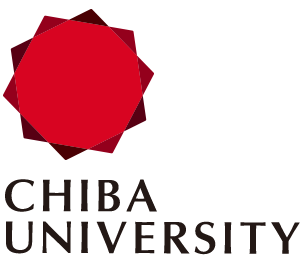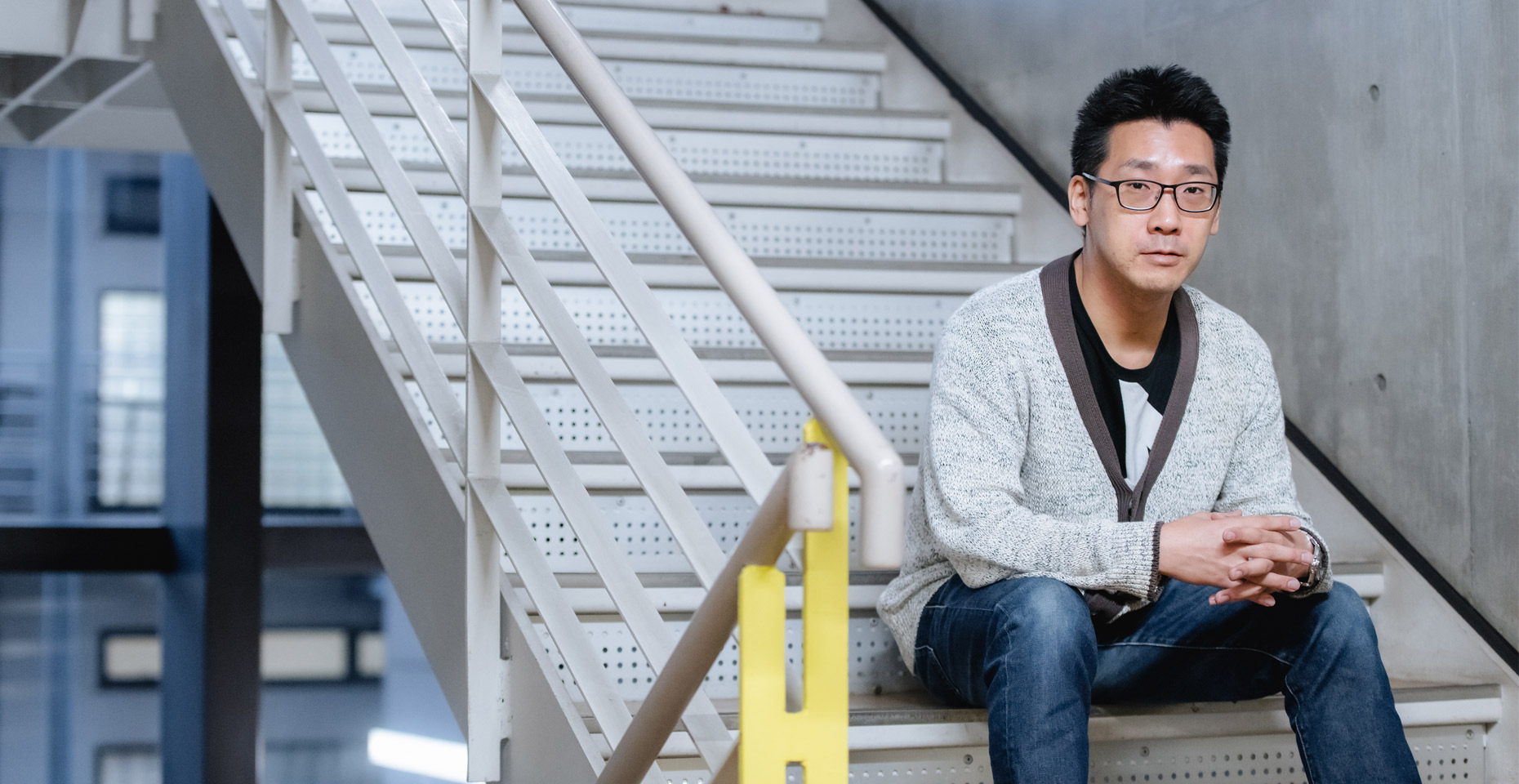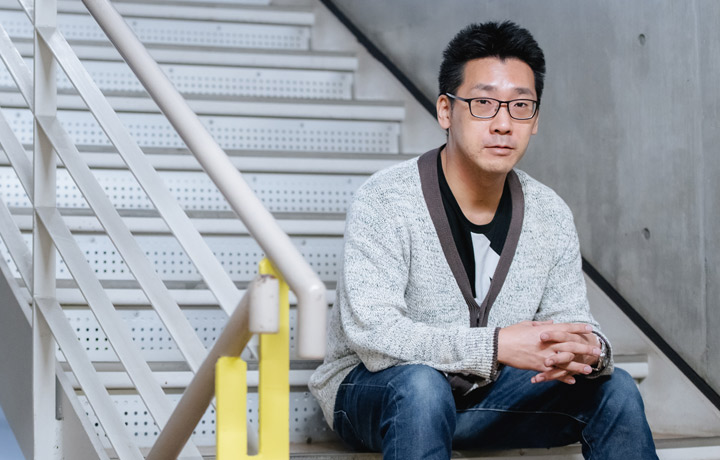In the vast universe, physical phenomena beyond our imagination occur. Multi-messenger astrophysics seeks to uncover the mystery of the universe by capturing various signals— such as gravitational waves and electromagnetic radiation—emitted by celestial events. Koutarou Kyutoku of the Graduate School of Science at Chiba University was bestowed the Young Scientists’ Award in the 2024 Commendation for Science and Technology by the Minister of Education, Culture, Sports, Science and Technology, in recognition of his achievements in ‘Theoretical Study on Multi-messenger Astrophysics.’ Speaking with Professor Kyutoku about his research, it became clear that his aspirations extend beyond the realm of astronomy—he hopes to contribute to the advancement of physics as a whole.
Theoretical research into gravitational and electromagnetic waves from space
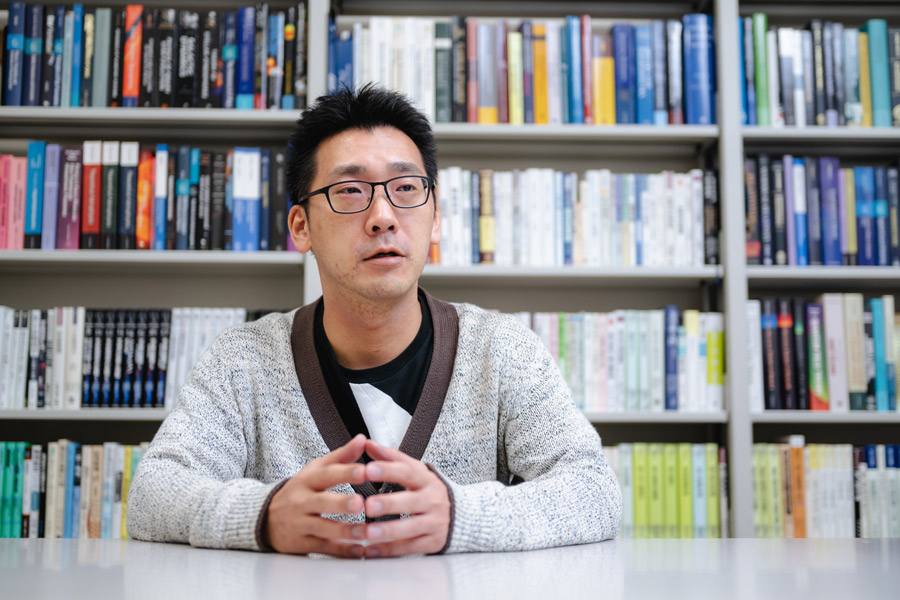
Please tell us about your research, ‘Multi-messenger astrophysics.’
Multi-messenger astrophysics is a research field that observes and analyzes multiple ‘messengers’—particles and waves—to investigate celestial objects and the structure of the universe and the fundamental physical phenomena underlying them.
Traditionally, astronomy has relied on the observation of electromagnetic waves, including visible light and gamma rays. However, not all celestial bodies emit electromagnetic waves. For example, black holes cannot be directly observed through electromagnetic waves, as their gravitational pull prevents light from escaping.
In this 21st century, however, we have gained the ability to detect entirely new signals. Multi-messenger astrophysics aims to reveal hidden aspects of the universe by combining information from various sources, such as neutrinos—elementary particles—and gravitational waves, which are the central focus of my research.
How do you approach multi-messenger astrophysics in your research?
I conduct theoretical calculations to predict what types of gravitational and electromagnetic waves can be detected when massive celestial bodies—such as black holes and neutron stars*—orbit each other and eventually collide under the influence of gravity. Gravitational waves are distortions in space-time caused by the acceleration of massive objects propagating at the speed of light.
However, simply detecting a celestial object does not immediately tell us what kind of event occurred. That’s where theoretical modeling becomes essential. For example, I begin by calculating a scenario such as, “If an object with these characteristics collides with another object, gravitational and electromagnetic waves with particular characteristics should be observed.” I then compare the results of these calculations with actual observations. This process of theoretical calculations is the core of my research.
Another important aspect of my work is making theoretical predictions for the future. I explore what signals we might detect using next-generation observational instruments and what types of observations would be needed to gain a deeper understanding of the universe.
To give a more tangible example, one particularly exciting possibility is identifying the exact origin of elements like gold and platinum. These heavy elements are believed to be created during the collision of extremely dense celestial objects in an explosive event known as ‘kilonova.’ Observations of gravitational waves have confirmed that such collisions involve neutron stars, while electromagnetic waves observation of accompanying kilonova have revealed that heavy elements are indeed synthesized in these explosive events. I believe that further research in this area will lead to a much deeper understanding of how these precious elements came into existence in our universe.
*Neutron star: A type of compact celestial object formed after a massive star explodes in a supernova. Composed mainly of neutrons, it typically measures around 10 kilometers in diameter yet contains a mass comparable to that of the Sun.
Theoretical research free from earthly constraints will enrich all of physics
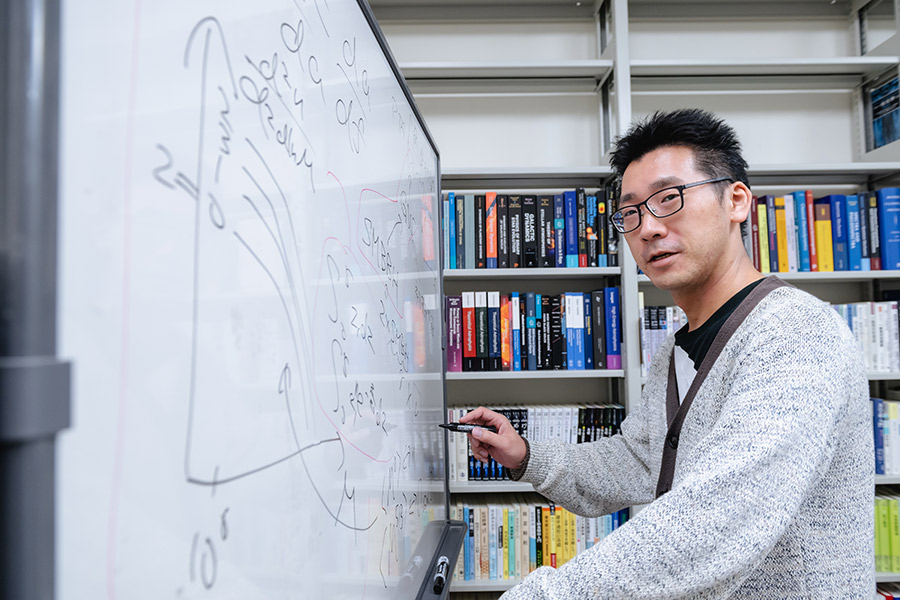
Could you share your research path with us?
I entered graduate school in 2007, at a time when gravitational waves had not yet been detected. I used large-scale numerical simulations to calculate the gravitational waves that would be generated when binary neutron stars orbit each other or collide.
Later, during my postdoctoral research at the High Energy Accelerator Research Organization (KEK), I studied astronomical phenomena through electromagnetic waves. This experience led me to realize the importance of combining gravitational wave and electromagnetic wave observations. For example, when a black hole and a neutron star merge, they emit not only gravitational waves but also electromagnetic waves. I thought that by capturing and analyzing both types of signals, I could obtain more reliable and accurate information than by analyzing just one alone.
What do you think is the appeal of your research?
One major appeal is the central role of gravity. Even after the establishment of general relativity, one of the biggest unresolved questions in physics is how to unify gravity with quantum mechanics. There’s still so much we don’t understand about gravity. On Earth, we experience only one type of gravitational environment, but in space, we can explore a wide range of gravitational conditions—that’s what makes it so fascinating.
Another interesting aspect is the incredible diversity of physics in the universe. On Earth, our experiments are constrained by the planet’s scale and conditions. But in space, there are physical phenomena happening under extreme environments—beyond what we can replicate or even imagine on Earth. By understanding these phenomena, I believe we can make broader contributions to physics.
While observational research is certainly exciting, I find that theoretical research offers a unique kind of freedom. With just a few people and some ideas, you can pursue big questions. I think I’m drawn to that sense of intellectual independence.
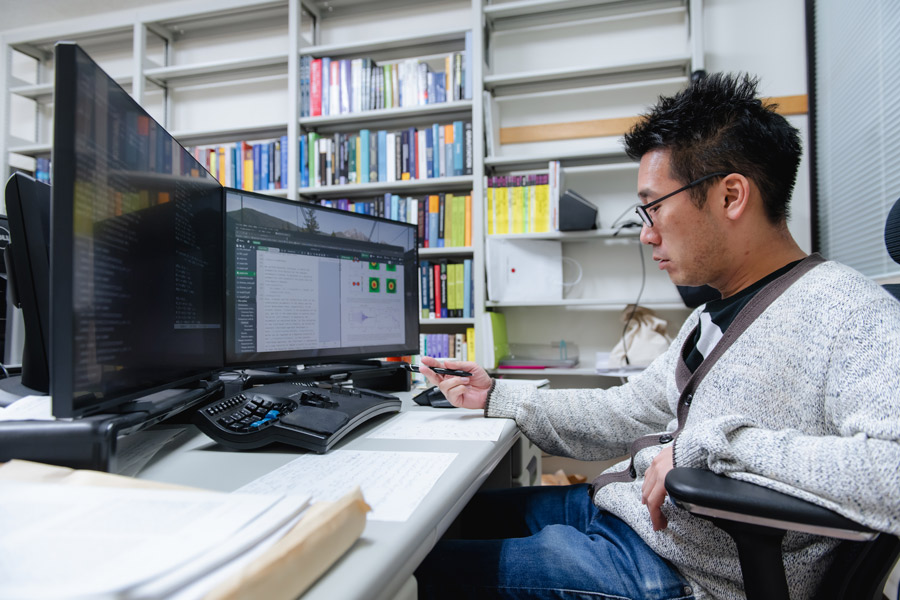
‘Intellectual independence’ suits your personality and research subject. What do you keep in mind when deciding on a research topic?
My guiding principle is to ‘conduct research that contributes to physics.’ When people think of space research, they often imagine it as applying existing physical theories to understand the universe. That’s certainly important, but for me, the real excitement lies in discovering new physical phenomena, exploring how they fit into our current understanding, and even uncovering new laws of physics.
Multi-messenger astrophysics might sound like a purely astronomical field, but it deals with universal principles of physics. For example, the phenomena that occur in the extreme environment of neutron stars are also closely connected to particle physics and nuclear physics. I believe that investigating the properties of neutron stars will lead to new insights into physics.
And when it comes to making discoveries, it’s just not as satisfying if someone else has already thought of the idea or carried out the research. I always aim to pursue topics where my own unique perspective can truly make a difference—research that only I could have done.
The essence of academia is communication
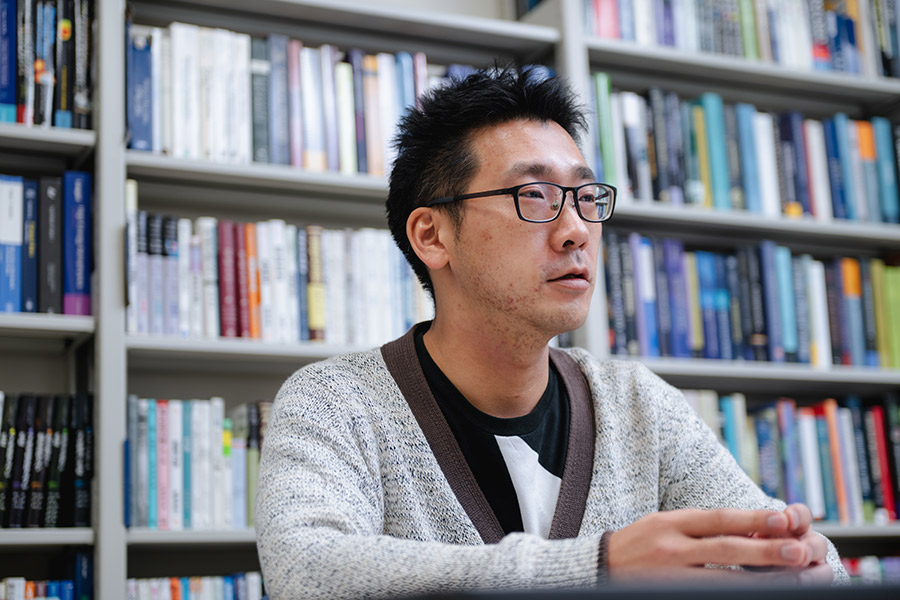
What are your prospects for future research?
In 2017, we witnessed a groundbreaking event: the simultaneous observation of a neutron star merger through both gravitational waves and electromagnetic waves. One of the key questions that fascinates me is whether a black hole forms following such a merger. I believe that, with the development of more sensitive telescopes, I will gradually be able to unravel this mystery.
This line of inquiry is closely related to a field of nuclear physics known as quantum chromodynamics (QCD), which describes the strong interactions between the quarks that make up neutrons. Because the extreme conditions inside neutron stars cannot be replicated in terrestrial experiments and are incredibly difficult to model theoretically, I aim to investigate QCD through the astronomical phenomena of neutron star mergers.
Do you have a message for students and young researchers?
People often think of research as an individual pursuit driven solely by personal curiosity. But at its core, academia is about sharing ideas and understanding with others—it’s a form of communication. No matter how valuable your research may be, if no one understands it, it cannot be considered academic.
If you are a student, try to expand your network beyond your usual group of friends. And if you’re a researcher, seek out diverse perspectives on your work. In doing so, you’ll not only deepen your insights but also gain a better understanding of yourself. In that sense, I believe Chiba University—with its rich diversity of people and disciplines—offers an excellent environment for meaningful academic exchange.
● ● Off Topic ● ●
Were you always interested in space, even as a child?
Not really. I wasn’t one of those kids who spent time looking through a telescope or anything like that. But I was always fascinated by gravity.
Gravity? That’s an interesting one to like!
In video games, characters who can control gravity are generally very strong. I thought that was very cool. I also liked physics in general, so astrophysics felt like the perfect field where I could study both gravity and the universe. That’s what got me into space.
Sometimes, inspiration comes from the most unexpected places.
Recommend
-

Creating Cities of Coexistence: Transitional Landscapes with the Tapestry of Diverse Lives
2024.02.09
-

Differential Equations for Living Organisms: Modeling the Movement of Cellular Slime Molds and Cancer Cells
2025.10.30
-

Enigmatic Soliton Waves in Nature and Space: Demystifying Equations of Everyday Physical Phenomena
2023.12.04
